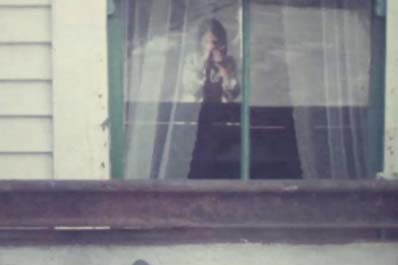|
WHERE
I AM IS HERE A poet, a defiantly independent filmmaker, an artist of unique and extraordinary vision – the great Margaret Tait would have been 100 on November 11th 2018. We’re celebrating her centenary with a special programme featuring new restorations of Tait’s film poems, alongside rare 16mm screenings from artists working in the tradition of intimate, first person cinema. Tait once said of her films, that they are born "of sheer wonder and astonishment at how much can be seen in any place that you choose… if you really look." Margaret
Tait’s work reminds us of what cinema is and can be. Cinema
can be personal. Films can be revisited, just like returning to
a novel or re-reading a poem. Films can be made over several years.
Films can be made in the country. Cinema can take place in venues
such as village halls, a room in a house, in a garden, in galleries,
and in small groups with talk or discussion, and in cinemas of all
shape, size and type...’ 'Scottish film-poet Margaret Tait produced an exquisite body of work combining poetry, portraiture, music, ethnography, and animation. She studied filmmaking in Rome during the height of Italian neorealism before returning to Scotland in the early 1950s, where she found inspiration in the contrasting daily rhythms of Edinburgh and the Orkney Islands. In an early jewel of a film, A PORTRAIT OF GA (1952), Tait cut together birdsong and snippets of Orkney lore with shots of her mother and the rugged island landscape to produce a startlingly poignant impression of family and place. She explored similar themes in later films like WHERE I AM IS HERE (1964), COLOUR POEMS (1974), and AERIAL (1974) – each screening tonight - reflecting on the passage of time while attending to the details of everyday life.’ (Amy Beste) Screening alongside Margaret Tait's films we're excited to present: Notebook
Menken
is one of the unsung pioneers of American experimental cinema, an
abstract painter turned filmmaker who inspired artists such as Stan
Brakhage, Andy Warhol, Jonas Mekas, and Kenneth Anger. Menken created
an extraordinary body of exuberant and stunningly beautiful films
shaped, above all, by her intuitive understanding of handheld cinematography. Lisa Ute
Aurand has been a central figure of Berlin’s experimental
film scene since the 1980s and is one the most significant filmmakers
active in the diary and portrait tradition today. Lisa is Aurand's latest film portrait, filmed over the years and in different locations in Germany and Japan. 'Filming portraits allows me to emphasize private gestures and moments beyond narration and documentation.' Ute Aurand Slides One of the few women working in, and sometimes in opposition to, the male dominated environment of the early London Film Makers Co-op. Like Menken, Nicolson came to film from painting, and made her first cameraless, handpainted film 'Abstract no. 1' in 1969. For Slides, made the following year - ‘a continuing sequence of tactile films were made in the printer from my earlier material. 35 mm slides, light leaked film, sewn film, cut up to 8mm and 16mm fragments were dragged through the contact printer, directly and intuitively controlled. The films create their own fluctuating colour and form dimensions - the appearance of sprocket holes, frame lines etc., is less to do with the structural concept and more of a creative, plastic response to whatever is around.’ Annabel Nicolson David
Toop on Annabel Nicolson Aberhart's
House Paul
(1955-2003) was a New Zealand artist who worked prolifically across
the mediums of film, poetry and painting. Working in relative artistic
isolation, her films, often shot and edited in camera, chronicled
motherhood and domestic life, the worn traces of urban settlement
and the persistent presence of the natural world. 'All my films
poems paintings play more or less between inner and outer events.'
Joanna Margaret Paul. Joanna Margaret Paul at Circuit
Where I Am is Here is part of this year's CineCity film festival - an amazing selection of world cinema, previews and live events running from the 9th - 25th November 2018 Tickets - £5 on the door
|



 ...
... ...
...